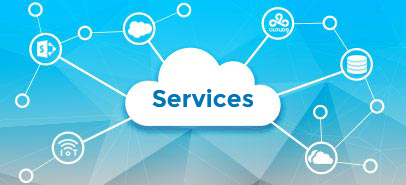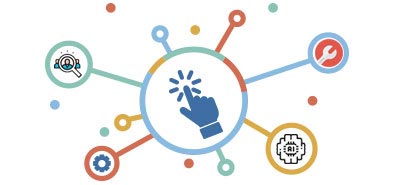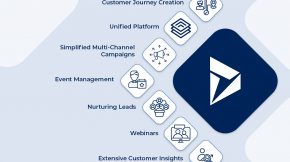Data lake architecture: A complete guide
Your business generates a lot of data. From real-time analytics, social media content, customer feedback, and more. Some of it, organized and easy to use, but a lot of it isn’t. That’s where the problem lies. And without a proper system, all that data sits there, unused.
This is where data lake can help. A data lake allows you to store your entire data. Whether structured or unstructured, in one place without organizing it first. The system that makes this possible called data lake architecture.
In this blog post, we’ll explain what data lake architecture is? How it works, and how it can help your business manage its data more efficiently.
What is a Data Lake?
Data lake is a giant digital centralized repository. Where all types of unstructured, semi-structured and structured data stored. It offers full liberty of storing everything in its original format. Even if they are photos, videos or any sensor data.
This flexibility allows you to leverage machine learning models and real-time data. It is perfect for handling massive amounts of data and many datasets with ease.
Data Lake vs. Data Warehouse
Before getting into a data lake, let’s understand how it differs from a data warehouse. Data warehouses have been around for hundreds of years. It designed for storing structured data, identifying patterns, and supporting decision- making. These are another kind of storage systems. That can transform in definition, design and construction.
The catch? They need data organized into a predefined structure before it’s stored. This toughness limits flexibility, especially when managing unstructured or messy data. By making it less ideal for today’s various data needs.
Difference Between Data Lakes and Data Warehouses:
Schema: Data Lake follows the schema-on-write model. Which involves writing data to the database before storage. Although it makes processes late but accurate.
But, a data warehouse applies a schema-on-read approach, implementing it upon data reading. It makes processes faster for storing data.
Data type: Data lakes can contain structured, semi-structured, and unstructured data. Yet, a data warehouse only holds structured data.
Analytics: Data lakes provide advanced analytics. Through profiling, data discovery, machine learning, and predictive analytics. While data warehouses include business intelligence, reporting, and visualization.
Processing: Data lake follows ELT principles (extract, load, and transform). Where transformation takes place after loading. And data warehouses work on ETL; here, transformation is before loading.
Cost: Data lake is a win when we talk about its cost, it works faster. Which cuts operational costs, Data warehouse. But it has slow performance to manage data processes. This is why there is an added operational cost.
What is The Architecture of a Data Lake?
Data lake architecture works on data science and machine learning. It’s a bit different from modern architecture. Modern data lake architecture is a smarter way of utilizing and managing data on a large level.
It designed to manage constantly increasing volumes of data. By ensuring compliance, accessibility, and suitability for analysis. It operated by SQL for faster results.
Let’s understand exploratory analysis of it:
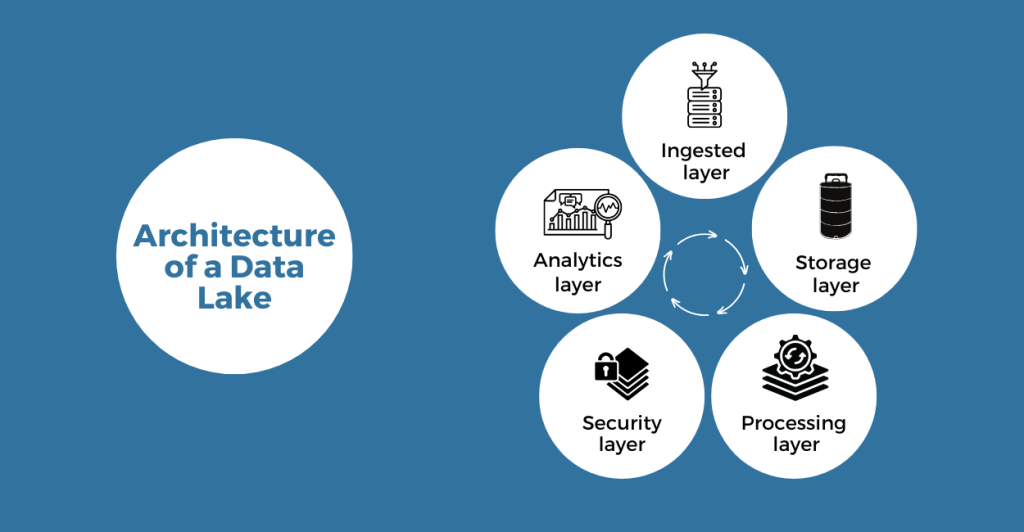
Ingested layer
The system gathers data from various sources. Regardless of whether structured, unstructured, or semi-structured. Configure real-time ingestion. No more delays!
There are two types of ingestion processes:
Batch ingestion: We use batch ingestion when we have a large data file ready to load. This may give slow results, but it is the most efficient way for such big datasets.
Streaming ingestion: Used for data ingestion such as social media. It provides real-time analysis of data and its reporting as well.
Storage layer
First, we receive raw, unorganized data and temporarily store it. Then, it goes through a cleaning and refining process. This involves fixing errors, adding missing information. And organizing the data into a functional format.
The result is “trusted” data ready for complex analysis and AI-powered insights.
Processing layer
After the initial transformation, “trusted” data may pass further refinement. This involves extra shaping and structuring to align with specific business needs. This refined data is where business analysts and data scientists can easily work on.
It’s easily accessible to their tools. Allowing them to quickly uncover valuable insights and make informed decisions.
Security layer
Data lakes must careful management to ensure their effectiveness and security. Governance policies set clear rules and guidelines for data access and usage. Strong security measures assist in protecting sensitive information. From unauthorized access and potential threats.
Continuous monitoring tracks data flow and identifies issues. Finally, data management involves active supervision, data quality, accuracy, and accessibility. This multi-layered approach is crucial for building and maintaining. A trustworthy and valuable data asset.
Analytics layer
Analytical layer provides a safe space for data exploration and experimentation. These isolated environments allow data scientists to analyze data. Build models, and test hypotheses without impacting the main data sources.
These layers allow the use of both raw and processed data. Once refined, the data transitions to the consumption layer. User-friendly tools make the data accessible here, empowering analysts and decision-makers. To pull drive informed business decisions and valuable insights.
Sure, you might already have ways to store data. But think about it: Are they flexible, scalable, and real-time ready? Probably not. Here’s why a data lake is the game-changer advantage you need to know:
- It can store any type of data, classifying from spreadsheets and text files to video, audio, and IoT data. Data Lakes break free from the limitation of predetermined structure and format.
- Data Lake provides solutions for increasing data volumes. It scales easily as your data grows; depends on your storage needs.
- Regardless of the size of your company. Data Lake provides cost-effective storage solutions with pay-per-use options.
- With centralized data storage, data lakes simplify advanced analytics. Now businesses can find hidden insights and patterns with AI and ML.
- You have access to unified storage for your data at your fingertips. Everyone can collaborate and make smart decisions, access easily, and work with data. You also can.
Despite its advantages, Data Lake requires careful handling to avoid these pitfalls.
- Harsh but true, maintaining raw, unstructured data quality across Lakehouse is hard.
- Scaling, particularly in performance optimization, unhide unexpected costs.
- Managing a Lakehouse needs specialized skills. In both data lakes and warehouses, which can be a challenge.
- Without a doubt, storage is crucial, but queries can be slow. Traditional warehouses are a win here.
Data Lake use cases
Are you searching for cutting-edge data solutions? Real-time decisions? Flexibility? Let’s know how this works!
- It excels in managing both structured and unstructured data. For predictive models and meaningful insights.
- It works on a real-time reporting model. The team responds quickly and provides real-time reports on emerging trends.
- Authorize building and deploying predictive models with data science and ML.
- You can use Data Lake for historical analysis. This allows for the forecasting of future trends.
- For predictive maintenance and device monitoring, it processes huge streams of IoT data.
Real-world examples of Data Lakes
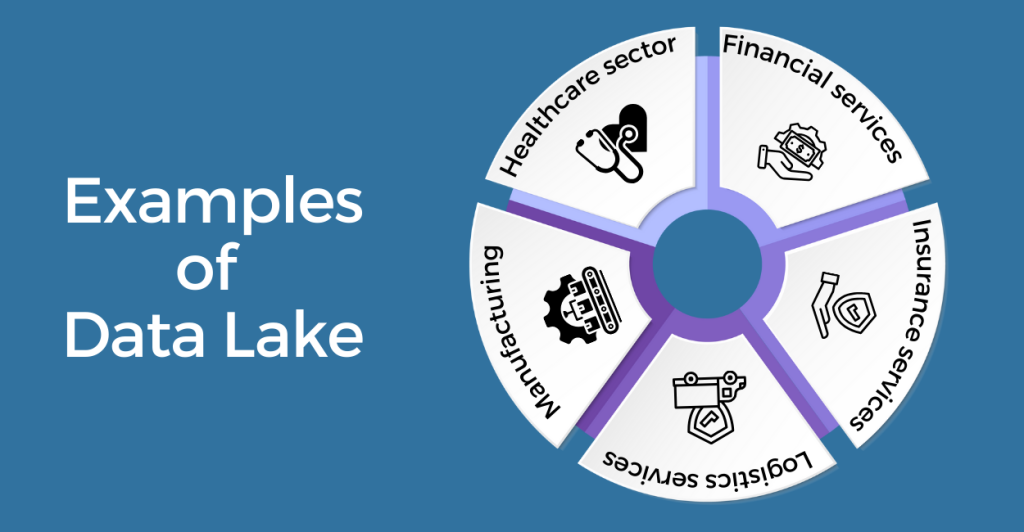
Do you still need convincing? I have presented some real-world examples of data lakes. That makes significant contributions.
- Handling patient data in the healthcare sector : Hospitals best use data lakes. By dumping all patients’ data from records to images. It also helps them to improve their quality of service. Forecast trends and make decisions.
- Fraud detection in financial services : With a data lake, banks can bring together customer data and transaction records. Spot the fraud and fix it in no time. It also helps in gaining the trust of users.
- Forecasted maintenance in manufacturing : Manufacturers supply operational data from machines. Supply chain data, and production stats in a data lake. Cheers to technology! It helps them to predict machine failures and also simplifies assignments.
- Risk management & claims in insurance : Insurance companies used to store data derived from customers in a data lake. These data may include claims, profiles, and even social media posts.
- Supply Chain optimization in logistics : Logistics companies use data lake to collect information from suppliers. Warehouses and vehicles are in unified place. This helps them to simplify delivery routes and track shipments. As they proceed and manage inventory more efficiently. The result? Lower costs, faster deliveries and a smoother supply chain operation.
Popular Data Lake platforms: fueling your architecture
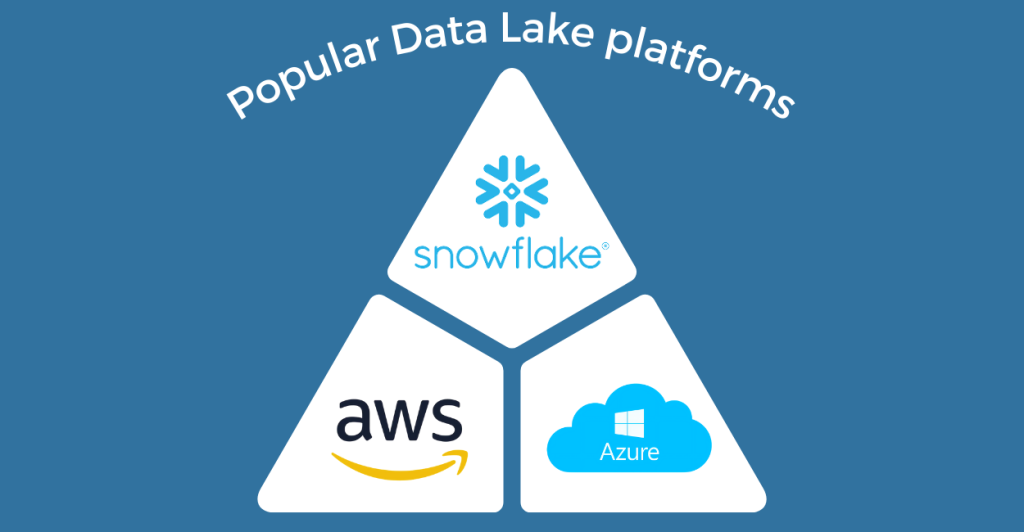
Snowflake for Data Lakes
Snowflake, a leading data cloud platform, revolutionizes data management. By seamlessly integrating different data types, from structured to unstructured.
Unlike traditional data lakes, it offers a unified experience. Allowing users to query and analyze data with original speed and ease. Snowflake’s innovative architecture eliminates common data challenges like slow performance and resource contention.
Key features like Snowpark and Snowpipe further enhance their capabilities. Enalbing users with flexibility and letting them unlock valuable insights from their data.
- For seamless integration of multiple data types there is a unified data platform.
- Snowpark and Sowpipe are key features for enhanced functionality.
- Eliminates performance bottleneck and resource gap, which enhances performance.
- Increases user experience by focusing on simplicity and ease of use.
Amazon Web Services (AWS) for Data Lakes
AWS provides a comprehensive platform for building and managing data lake solutions. Centered around its scalable S3 low-cost storage service. This interconnected ecosystem integrates seamlessly with a wide range of tools. By offering flexibility and adaptability.
While the complexity of this ecosystem can present a learning curve. AWS addresses this with user-friendly services like AWS Lake Formation. Simplifying data management tasks like cataloging, searching, and sharing.
This certifies organizations to harness the power of their data adequately, driving informed decisions and unlocking new business opportunities.
- Gives centralized storage though using S3 as the foundation.
- Interconnected ecosystem, it integrates within various AWS services.
- AWS lake formation for easier data handling, making it simplified management.
- For business values, it unlocks new opportunities and enables data driven decision making.
Azure Data Lake Storage
Azure Data Lake Storage Gen2, an evolution of Azure Blob storage systems. Offers a powerful and secure platform for storing and managing vast amounts of data. This robust solution leverages the strengths of Azure’s ecosystem. Generates seamless integration with other services and facilitating a thorough data management strategy.
With advanced security features and the capacity to handle demanding workloads, Azure Data Lake Storage Gen2 authorizes organizations. To open the full potential of their data and drive impactful business decisions.
- Leverage the broader Azure ecosystem by integrating ecosystem.
- It was built upon Azure Blob storage which sets evolutionary foundations.
- It has the capabilities to manage heavy workloads with security.
Are you ready to set up a Data Lake example?
In a nutshell, a data lake combines the power of both data lakes and data warehouses. Offering a flexible and efficient way to manage and analyze all types of data. Whether it’s structured or unstructured.
It’s perfect for businesses looking for in-depth analysis. Real-time reporting, and more—enabling smarter decision-making. At Beyond Key, we’re here to help businesses like yours unlock the true power of data lake architecture. Let us show you how to harness your data to provide real results and stay ahead of the curve.
If you’re ready to take your data strategy to the next level, let’s chat about how we can help. Reach out to Beyond Key today, and let’s make your data work harder for you!


